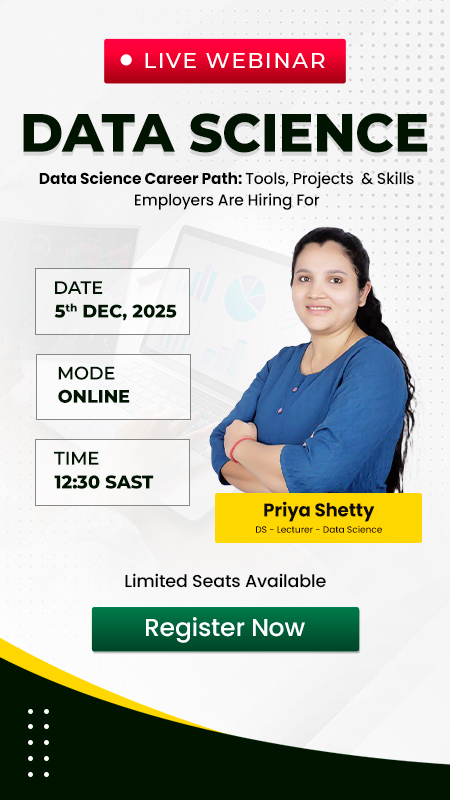Social Media Marketing Definition – What It Really Means Today
If you’ve ever paused on a short video, clicked through a carousel, or commented on a post from a brand you like, you’ve already taken part in social media marketing. When people ask “what is Social Media Marketing’s definition?”, they want a clear, practical answer.
At its core, social media marketing uses social platforms to promote brands, engage audiences, and drive measurable business results. It sits inside the wider field of digital marketing and focuses on two-way communication, community building, and content that encourages interaction.
In this article, we explain the main parts of social media marketing and outline modern Social Media Marketing strategies in 2026 that you can apply. We’ll also help you know how Digital Regenesys courses prepare you to work confidently in this field.
Why Social Media Matters in Digital Marketing?
Social platforms play a central role in how people discover brands, compare options, and make purchasing decisions. As more daily interactions shift online, organisations rely on social media to stay visible, communicate clearly, and build trust with their audiences.

The following points will help you understand how good Social Media activity helps brands:
1. Awareness
Social media marketing builds brand recognition and awareness by putting content in front of active audiences. Consistent messaging strengthens visibility and enables long-term brand recall.
2. Targeted reach
Social platforms use rich audience data to help businesses reach people who match their interests, demographics, and buying behaviour. This improves relevance and reduces unnecessary advertising spend.
3. Sales Support
Social content helps guide potential customers through to enquiries, sign-ups, and purchases by directing them to landing pages and product information. This creates an easier path through the sales funnel.
4. Customer Service
Social media has now enabled organisations to serve customers in real time, respond to concerns, and elicit feedback.
This is the practical answer to the question of ‘What is Social Media Marketing’ in Digital Marketing. It is the discipline connecting brand goals with audience behaviour on social platforms. It makes sure that organisations remain visible, trusted, and ready to respond.
Read More: Importance of Social Media | Know How It Increases Business Sales & Shapes Marketing Strategies
Key Components of Social Media Marketing
Social media marketing comprises elements that work together to strengthen brand presence and support business goals. When these elements are applied consistently, organisations can build stronger relationships and improve campaign outcomes.
To understand this better, let’s look at some of the most essential components:
1. Content & Creative
Content is the heartbeat of social media. This includes short-form videos, images, carousels, stories, live streams, and written posts. Great content aligns with audience interests and platform habits, e.g. short-form vertical video for TikTok or Reels, or in-depth articles and thought pieces on LinkedIn.
For content to spur sharing and repeat engagement, it needs to solve a need, provoke a response, or make a connection.
2. Targeting & Audience
Targeting transforms a message into an effective campaign. All platforms provide options for narrowing audiences down to demographics, interests, behaviours, and even previous website visits.
Audience research informs a message’s tone, format, and timing. Precise targeting cuts down on wasted spend and increases relevance, which translates to fewer irrelevant impressions and better conversions.
In organic work, targeting means identifying specific communities one can join and tailoring a message to their unique needs and vernacular.
3. Paid Social & Campaigns
Paid social amplifies reach and accelerates results. Advertisers bid for placements, set budgets, and run A/B tests to learn what performs best. Campaigns are structured around objectives, i.e. awareness, leads, website visits or conversions.
Smart bidding, conversion tracking, and creative testing help optimise cost-per-result. Paid social works best when it complements organic content and remarketing lists built from site visitors or existing customers.
4. Analytics & Measurement
Analytics turn activity into insight. Marketers track reach, engagement, click-throughs, leads, and cost per action. These metrics show what content and audiences drive value and which tactics need to change.
Regular reporting links social outcomes to business goals, for example, how many sales originated from a campaign or how brand sentiment changed after a launch. Continuous testing and learning are central to steady improvement.
5. Community & Engagement
Community management makes social channels human. Reply to comments, moderate conversations, and encourage user-generated content to build trust. It also finds product feedback and customer issues early through active engagement.
Strong communities create repeat customers and brand advocates who share content for you. The best social brands treat community as a two-way relationship, i.e. listening as much as broadcasting.
For detailed information, read this blog: What is Social Media Marketing? Explore Essential Components and Popular Platforms

Social Media Marketing Examples that Work
Effective Social Media Marketing examples demonstrate how ordinary content can serve business objectives without complex tricks. Many organisations depend on simple, regular formats that teach, notify, or entertain their audiences.
These examples work because they align with user behaviour, deliver value in minimal time, and invite engagement. The examples below show practical ways to apply the Social Media Marketing’s definition in real campaigns.
Here are practical, platform-focused examples you can adapt:
- Short-form video series featuring product how-tos and actual customer stories.
- Carousel posts that teach a business concept step by step, linking to a resource page.
- LinkedIn thought-leadership posts that attract enquiries from B2B buyers.
- Live Q&A sessions to introduce new services and answer questions from the audience in real time.
Social Media Marketing Strategies in 2026
Social Media Marketing strategies continue to shift in 2026 due to algorithm updates, new tools, and responses to user trends. Brands must now develop content that feels organic to each platform while keeping a coherent voice throughout.
The following strategies reflect how modern marketers approach such growth and meaningful engagement.
Effective strategies include:
- Prioritise short-form video while optimising for new discovery algorithms.
- Using first-party data and privacy-safe retargeting approaches.
- Integrate commerce features to shorten the path from discovery to purchase.
- Building cross-platform funnels where organic content feeds paid campaigns, and vice versa.
Strategy now fuses creativity with sound data practices and audience-first thinking.

Measuring Success
Measuring Social Media Marketing success requires clarity about your objectives, since different goals call for different metrics. Most organisations will use multiple indicators, from awareness to conversions, to understand the contribution that content makes to the greater customer journey.
By regularly reviewing measures, a team can learn what drives performance and where improvements are needed.
Typical measures include:
- Awareness: reach, impressions, brand lift surveys.
- Engagement: likes, shares, comments, watch time.
- Conversion: click-through rate, leads, cost per acquisition.
- Retention: repeat purchases, community growth, customer lifetime value.
Connect these to revenue or cost-savings wherever possible to show true ROI.
Who Should Learn Social Media Marketing?
Social Media Marketing is ideal for those who enjoy mixing creativity with measurable outcomes. It attracts people who want to work within fast-moving digital trends while learning the practical techniques that result in clear career value.
Whether someone is focused on supporting their own business or transitioning into marketing, these capabilities remain relevant.
Social media skills suit:
- Small business owners who want to generate leads.
- Marketing professionals seeking hands-on, paid and organic experience.
- Career changers looking for a measurable digital specialism.
- Consultants and freelancers providing social services to clients.
SMM is a practical and measurable career path that involves data, creativity, and working with people.

How Digital Regenesys Helps You Learn SMM?
Digital Regenesys provides a structured Digital Marketing Course with Gen AI course that tangles theory with practice for a work role in digital marketing. The course equips students with the ability to plan content, manage campaigns, and interpret analytics. Practical assignments will build confidence and provide material for a professional portfolio.
The course focuses on:
- Campaign setup and optimisation – Learners practise building and adjusting campaigns so they understand how to reach the right audience and improve performance over time.
- Creative writing and content briefs – Students learn how to write clearly, develop ideas, and shape visuals that suit different platforms and brand requirements.
- Analytics and conversion tracking – The course teaches learners how to review performance data, measure results, and make informed decisions based on insights.
- Portfolio-ready assignments – Practical tasks allow students to showcase real work, which supports interviews and demonstrates applied ability to employers.
It gives a balanced theoretical and practical course that will enable learners to confidently take up roles.
Read More: Where to Study Social Media Marketing: Find the Perfect Learning Path for You!
Common Pitfalls to Avoid
Even with strong content ideas, Social Media Marketing can quickly lose impact when common mistakes occur. Most of these challenges arise from a lack of consistency, failure to define clear objectives, or tracking the wrong metrics.
Knowing them allows marketers to save valuable time, allocate budgets more effectively, and improve audience experiences. The following points pinpoint some common mistakes and why they are significant.
Avoid:
- Chasing vanity metrics without business alignment.
- Posting inconsistent content that confuses audiences.
- Ignoring negative feedback without addressing it.
- Running ads without proper conversion tracking.
Avoid these, and your social efforts will be more effective and easier to scale.

Conclusion
The Social Media Marketing’s definition is simple: Use the social platforms to build relationships, drive action and measure results. In practice, successful SMM blends creative content, precise targeting, continuous testing and genuine engagement. As the platforms change, the core skills-strategy, measurement, and community management-remain critical.
If you want practical training, Digital Regenesys’ Digital Marketing with Gen AI course provides hands-on experience with the tools you need to run real social campaigns.
Kick-start your social media marketing learning with Digital Regenesys. Enrol today and build campaigns that deliver results.
FAQs
What is Social Media Marketing?
Social media marketing uses social platforms to promote brands, build community, and drive measurable outcomes such as leads, sales or website traffic.
What is Social Media Marketing in Digital Marketing?
It’s the subset of digital marketing that focuses on social channels for communication, advertising, and community building to meet broader business goals.
What are effective Social Media Marketing strategies in 2026?
Short-form video, privacy-safe targeting, integrated commerce and cross-channel funnels are central strategies for 2026.
What are some examples of Social Media Marketing?
Examples include product demo video series, LinkedIn thought-leadership posts, carousel tutorials and live Q&A launches.
Will Digital Regenesys teach practical social skills?
Yes. The Digital Marketing course includes campaign setup, content planning, analytics and hands-on assignments for real-world readiness.













